What is visible under the Black Sun of Gyedi Prime?

Director Denis Villeneuve and cinematographer Greg Fraser made an interesting cinematic decision in Dune: Part Two by filming scenes on the planet Giedi Prime in infrared. In addition to the outstanding visuals, this provides an opportunity to discuss related interesting physical phenomena.
How was it filmed?
IN interview Greg Fraser explains how the scenes were shot in infrared. There was no need to use any special equipment. Conventional movie cameras were used, in which the filter blocking infrared radiation was replaced with a filter blocking visible radiation and transmitting infrared radiation. It is not known for certain which filter was used, but experiment showed that the most similar results are obtained by filters that transmit infrared radiation with a wavelength of 720 nm.

More than 700 nm and up to 1 mm – infrared radiation (IR).
From 700 nm to 1400 nm – near infrared radiation.
From 10 nm to 400 nm – ultraviolet radiation (UV).
Source.
The possibility of switching from filming in the visible range to filming in the infrared range by simply changing the filters on the camera is due to the fact that there is no fundamental fundamental physical difference and no clear boundary between visible and near-infrared radiation. And in fact, all modern digital cameras are capable of recording infrared radiation. But infrared radiation spoils the image in visible light, so filters are installed on all cameras that cut off infrared radiation.
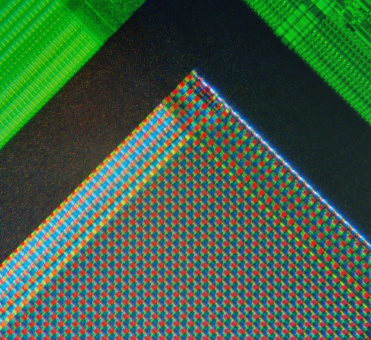
The radiation detector in digital cameras is photomatrix, each element of which is a semiconductor device that converts the energy of light radiation into an electrical signal. The two main types of photomatrix are CCD matrices – charge-coupled device (CCD), in which the converting element is a capacitor based on a semiconductor, and CMOS matrix (CMOS), in which the converting element is a photodiode. The operation of both types of matrices is based on the phenomenon of the photoelectric effect in semiconductors. In a semiconductor device, to convert the energy of light radiation, the radiation particle – a photon – must have an energy greater than the threshold energy, which is related to the band gap of the semiconductor.
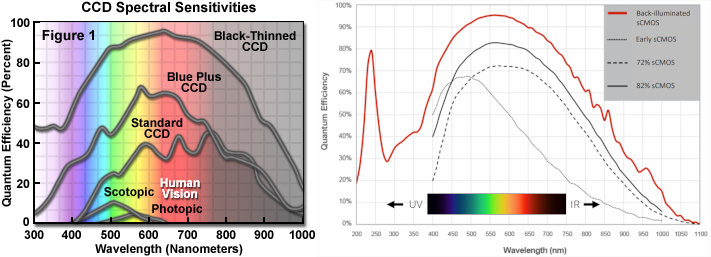
For silicon, which underlies all modern semiconductor electronics, the width forbidden zone is about 1.14 eV. The wavelength of a photon with this energy is 1080 nm. Those. starting from the middle of the near-infrared spectrum, radiation will be recorded by silicon matrices.
Cheaper devices save on the use of IR filters, so you can conduct a small experiment at home to register IR radiation. In control panels, such as a TV or air conditioner, an IR LED is used to transmit commands. If you photograph this LED on a digital camera when you press a button, the LED on the camera screen will light up purple. This occurs due to insufficient cutoff of IR radiation by the filter, which is detected by the blue and red elements of the matrix.
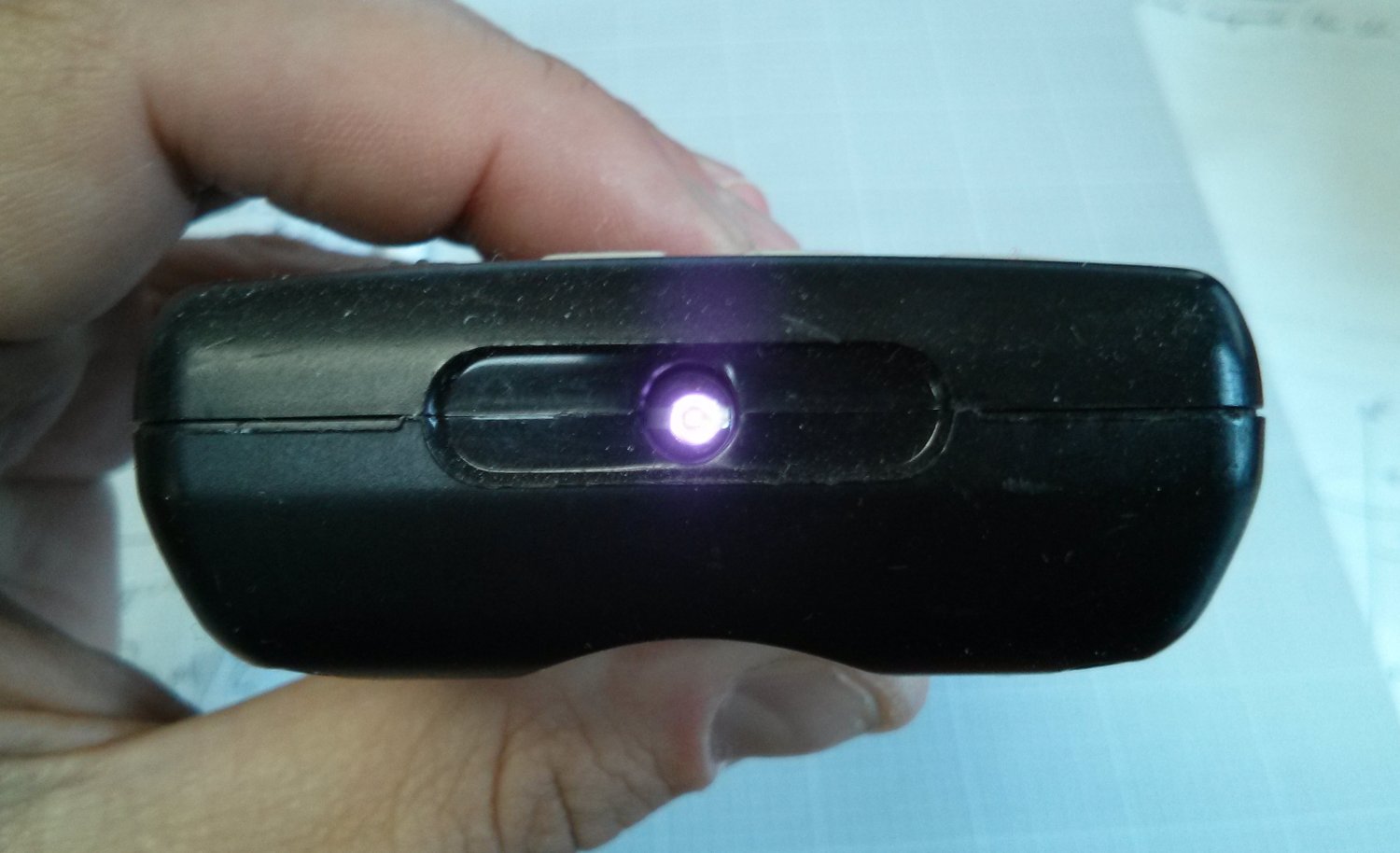
What does a person look like in IR?
Let's return to the frame from the film with the heads of Atreides and Feyd-Ruth in the infrared spectrum.

The top of Feyd-Rautha's head looks very light and clean compared to the bottom and Atreides' head. The explanation is very simple: Austin Butler, the actor who played Feyd-Rautha, did not shave his head for the film. Make-up was applied to the actor – a special hat simulating baldness and lack of eyebrows. In the frame you can see where the natural skin turns into makeup.
Human tissue in the visible range is obviously opaque, but near-infrared radiation is able to penetrate deeper into tissue due to less scattering and absorption. At the same time, the veins on Atreides’ head are clearly visible, because absorb well in the near-IR spectrum due to the presence of hemoglobin.
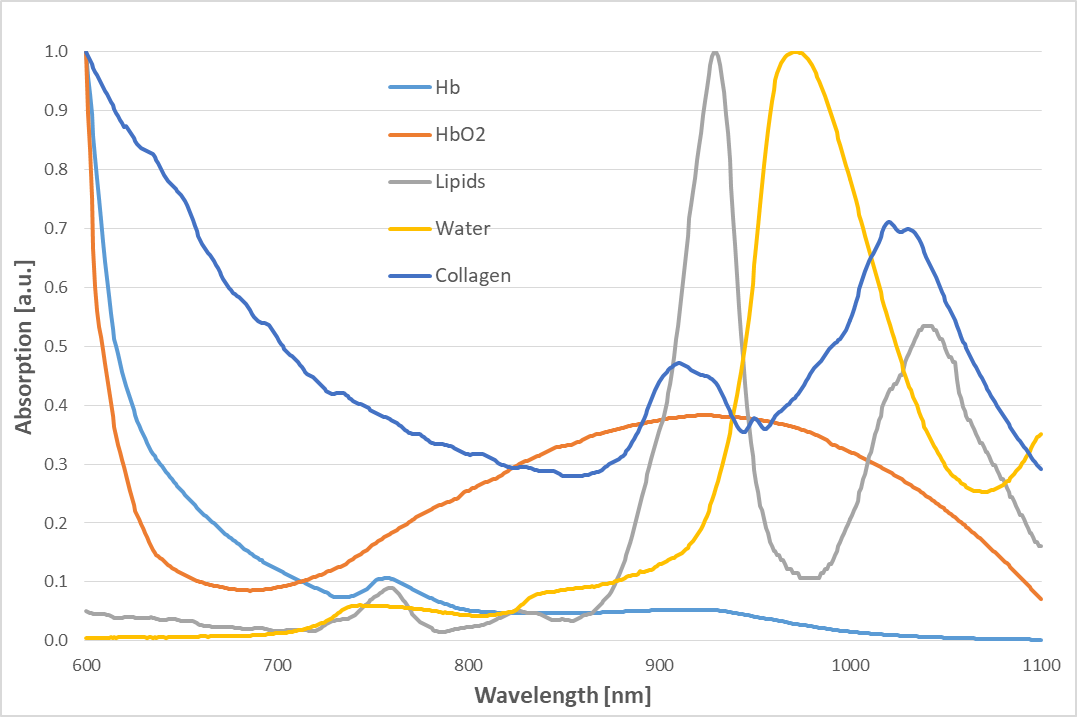
This effect has found application in medicine. For example, pulse oximeters, which measure pulse and the amount of oxygen in the blood, do this by measuring tissue absorption of near-infrared radiation.
Devices have also been created to help nurses locate veins when they need to insert a catheter and take blood for analysis. NIR illumination is not visible to the eye and does not interfere, but veins in images are much easier to detect using image processing algorithms. Then you can project the contours of these veins onto your hand.
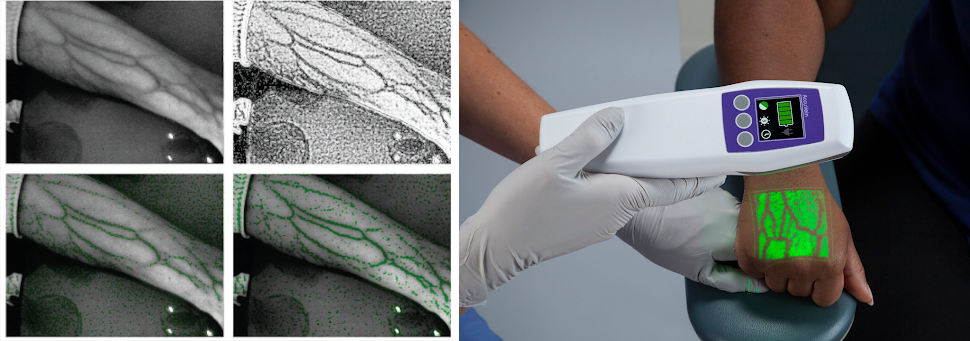
How realistic are the views of Gyedi Prime?
This visual perception is of course not very realistic. The human eye is not adapted to vision in the infrared range, but only in the visible. Because of this, the visible range is highlighted separately.
The radiation detector in the eye is the retina, and the sensitive elements in it are two types of cells, rods and cones. Rods have high sensitivity and are responsible for black-and-white night vision in low light. Cones operate in high light and are responsible for color vision. Therefore, there are 3 types of them, the most sensitive to red, green and blue colors, respectively.
At good lighting With the greatest efficiency, the eye as a whole registers radiation with a wavelength of 555 nm, which corresponds to the green color. And in low light, blue-green objects will be most visible.
Because the eye is more sensitive to green, green objects are perceived brighter than objects of other colors, although in absolute terms the same intensity of light emanates from them. Therefore, cameras that are designed to record how a person sees the world must collect more green light, otherwise green objects will appear unnaturally dark in photographs. Therefore, to obtain color images, color filters are used, e.g. Bayer filter, and one pixel of the image is obtained from 4 elements of the sensor matrix: red, blue and 2 green. This can be seen in the photograph of the photomatrix above. In one square of the matrix, there are two green elements along the diagonal, and one blue and one red along the other.
The sensitivity of the eye receptors does not have a sharp threshold, after which it is zero. Therefore, the eye is, in principle, capable of registering near-infrared radiation, and a person can see in this range. And due to the effect of two-photon absorption at a wavelength of 1000 nm, the sensitivity of photoreceptors growing.

If we try to imagine possible scenarios and consider a monochrome radiation source with a wavelength of 720 nm, then with sufficient intensity it is in principle possible to see a very dim black and white image. If a radiation source has a blackbody spectrum with a peak at 720 nm, then part of the radiation falls into the red and orange parts of the visible spectrum. Therefore, in the light of such a source, the image will be in red-orange tones.
One way or another, it seems impossible to obtain with an unmodified human eye exactly the same perception as from shooting with a camera in the infrared range.
Some other animal species on Earth have more advanced eyes, such as birds There are 4 types of cones that allow them to see in ultraviolet light. And in the eyes mantis crayfish There can be up to 16 types of photoreceptors, which allows them to see in both UV and IR. But I think it’s impossible to imagine how such species perceive the world around them. Separately, it is worth noting thermal radiation in the far IR with a wavelength of about 10 microns from objects with a temperature of about room temperature, 30 ℃. This radiation is “seen” by some snakesand a person can see it using thermal imagers.
The high sensitivity of the human eye to green, in turn, is most likely associated with our Sun. The temperature of the solar surface is about 5800 K, which means that the peak of the spectrum of solar radiation, according to Wien's law, lies at a wavelength of about 500 nm, just in the green part of the spectrum and next to the peak of the sensitivity of the retinal rods.
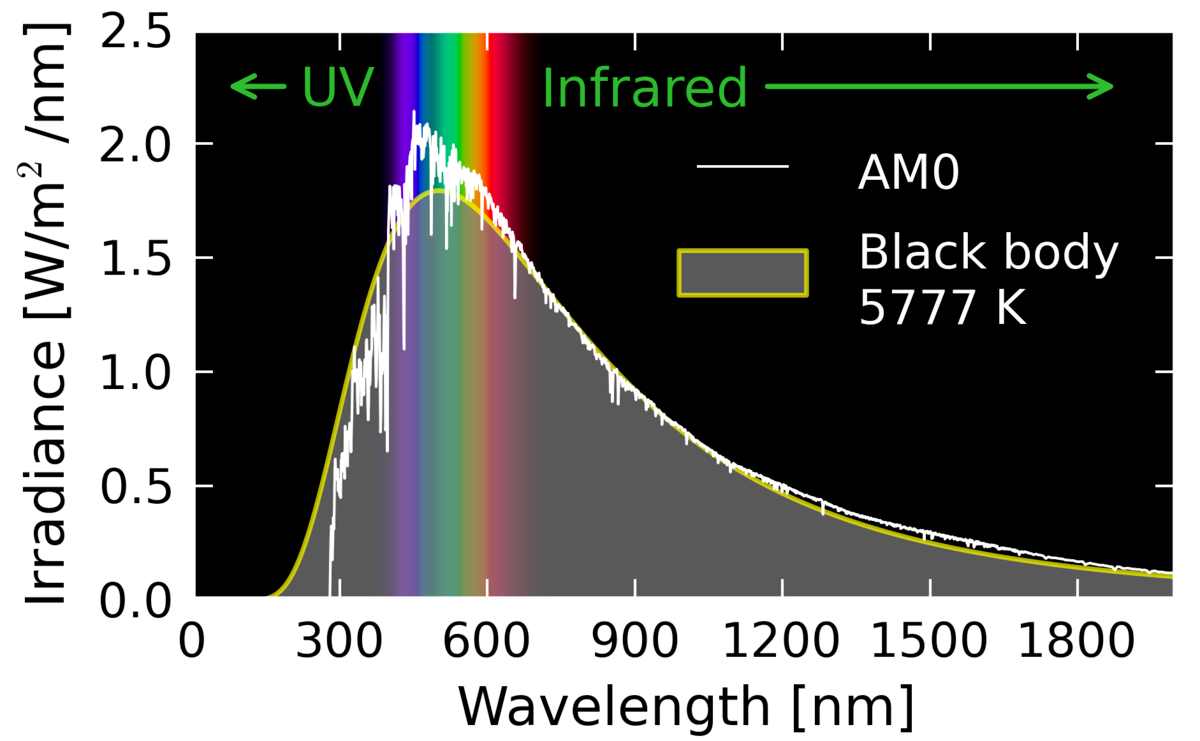
In the Dune Universe, the planet Gyedi Prime is assigned to a real star – 36 Ophiuchi B – an orange dwarf of spectral class K2. 36 Ophiuchi B slightly cooler than the Sun, its surface temperature is about 5000 K and the peak of the emission spectrum is at 580 nm in the orange part of the visible spectrum. For life to evolve eyes that are most sensitive in the near-infrared spectrum at 700 nm, as in Villeneuve's film, it would have to originate on a planet orbiting a cooler star, with a surface temperature of about 4100 K.





